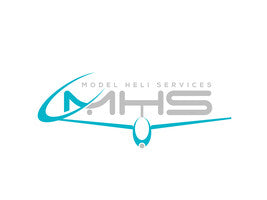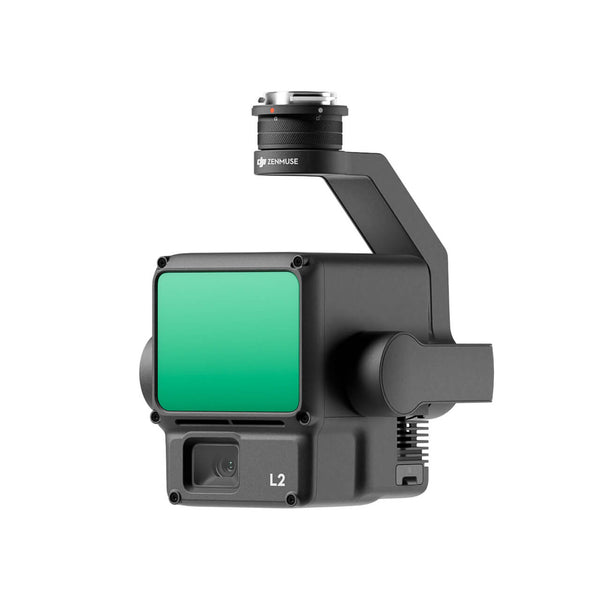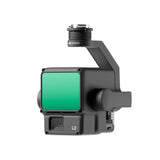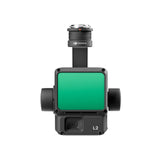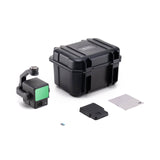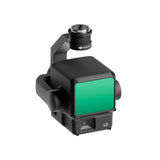- DJI Zenmuse L2 Worry-Free Basic Combo
-
Zenmuse L2 integrates frame LiDAR, a self-developed high-accuracy IMU system, and a 4/3 CMOS RGB mapping camera, providing DJI flight platforms with more precise, efficient, and reliable geospatial data acquisition. When used with DJI Terra, it delivers a turnkey solution for 3D data collection and high-accuracy post-processing.
Integrated LiDAR Solution
Supported by its powerful hardware, L2 can allow for a precise scan of complex subjects within an extended range and faster point cloud acquisition. During operations, users can preview, playback, and process point cloud models on-site, with Task Quality Reports generated by DJI Terra, offering a simple, one-stop solution to improve overall efficiency. This enables users to achieve high-precision point cloud results with one-stop post-processing.

- High-Level Precision
- Exceptional Efficiency
- Intuitive Operation
- 30% Detection Range Increase[5]
- Smaller Laser Spots, Denser Point Clouds
- Supports 5 Returns
- Effective Point Cloud Rate: 240,000 pts/s
- Two Scanning Modes
- Frame-based Design
- Yaw Accuracy[6]
- Pitch/Roll Accuracy[6]
- No IMU Warm-up
- 4/3 CMOS, Mechanical Shutter
- Land Surveying and Mapping
- Electricity management
- Forestry management
- Infrastructure management
By combining GNSS and a high-accuracy self-developed IMU, this solution achieves 4cm vertical accuracy and 5cm horizontal accuracy.[1]

It’s ready for work as soon as it’s powered on and can collect both geospatial and RGB data from a 2.5km2 area in a single flight.[2]

In conjunction with Matrice 350 RTK and DJI Terra, L2 offers a turnkey solution that is simple to use, lowering the operational threshold.
Frame-Based LiDAR

L2 can detect from 250 meters at 10% reflectivity and 100 klx,[3] and up to 450 meters at 50% reflectivity and 0 klx.[3] The typical operational altitude now extends up to 120 meters, notably enhancing operational safety and efficiency.
With a reduced spot size of 4×12 cm @100m, only a fifth of that of L1, L2 not only detects smaller objects with more details, but can also penetrate denser vegetation, generating more accurate digital elevation models (DEM).
In densely vegetated areas, L2 can capture more ground points beneath the foliage.
In both single and multiple return modes, L2 can reach a max point cloud emission rate of 240,000 points per second, allowing the acquisition of more point cloud data in a given time frame.
L2 supports two scanning modes, offering flexibility for users based on their task demands. In repetitive scanning mode, L2's LiDAR can achieve more uniform and accurate point clouds while meeting high-precision mapping requirements. In non-repetitive scanning mode, it offers deeper penetration for more structural information, making it suitable for power line inspection, forestry surveying, and other scenarios.
The frame-based design results in an effective point cloud data rate of up to 100%. Together with a three-axis gimbal, it brings more possibilities to surveying scenarios.
High-Accuracy IMU System
Improved Accuracy
The high-accuracy self-developed IMU system, combined with the drone’s RTK positioning system for data fusion during post-processing, gives L2 access to highly accurate absolute position, speed, and attitude information. In addition, the IMU system’s enhanced environmental adaptability improves the operational reliability and precision of L2.
Real-time: 0.2°, post-processing: 0.05°
Real-time 0.05°, post-processing 0.025°
The performance of the IMU system has been significantly enhanced, and it is ready for use the moment it's powered on. And, the accompanying drone is ready to begin tasks immediately once the RTK is in FIX status, delivering an optimized in-the-field experience.
RGB Mapping Camera

Pixel size has been enlarged to 3.3 μm, and effective pixels now reach 20 MP, resulting in a significant improvement in overall imaging, as well as more enriched true-color point cloud details. The minimum photo interval has been reduced to 0.7 seconds. The mapping camera has a shutter count of up to 200,000 times, further reducing operational costs. When point cloud collection is not needed, the RGB camera can still take photos and videos, or collect images for visible light mapping.
Enhanced Operational Experience
Diverse Flight Route Types
Supports Waypoint, Area, and Linear Route types, for handling surveying tasks in a variety of environments.
Point Cloud LiveView
During operation, DJI Pilot 2 supports three display modes - RGB, point cloud, and point cloud/RGB side-by-side display, presenting operational results in an intuitive way. Activating RNG (Laser Rangefinder) enables access to the distance information between the LiDAR module and the object in the center of the FOV, enhancing flight safety. It also supports four real-time point cloud coloring modes - Reflectivity, Height, Distance, and RGB.
Point Cloud Model Playback and Merging
After the operation, the 3D point cloud model[7] can be viewed directly in the album. 3D Point cloud models of multiple flights can also be merged, enabling on-site decision-making regarding operational quality.
Auto-Generated Task Quality Report
After point cloud data collection, the DJI Pilot 2 app will automatically generate a Task Quality Report[8] so that operators can check operational results in real-time and on-site, making fieldwork more responsive and worry-free.
PPK Solution
In complex operational environments, users can set up RTK base stations before the operation to preemptively avoid the loss of RTK data due to interference, video transmission disconnection, or other issues. After the operation, import original files into DJI Terra to use the PPK (post-processing kinematic) process to rebuild high-precision models.
One-Click Processing on DJI Terra
Achieve efficient and reliable one-stop post-processing when importing point cloud data into DJI Terra. Generate a standard-format 3D point cloud model with just a click after point cloud trajectory calculation and accuracy optimization. Upon ground point classification, using Ground Point Type, a DEM can be output. Point cloud quality can be analyzed with the Accuracy Control and Check function.
Application Scenarios
In coordination with DJI Enterprise flight platforms and DJI Terra, Zenmuse L2 can be applied to land surveying and mapping, electricity, forestry, and infrastructure management, as well as other scenarios.




- Notes:
- Measured under the following conditions in a DJI laboratory environment: Zenmuse L2 mounted on a Matrice 350 RTK and powered on. Using DJI Pilot 2’s Area Route to plan the flight route (with Calibrate IMU enabled). Using repetitive scanning with the RTK in FIX status. The relative altitude was set to 150 m, flight speed to 15 m/s, gimbal pitch to -90°, and each straight segment of the flight route was less than 1500 m. The field contained objects with obvious angular features, and used exposed hard ground checkpoints that conformed to the diffuse reflection model. DJI Terra was used for post-processing with Optimize Point Cloud Accuracy enabled. Under the same conditions with Optimize Point Cloud Accuracy not enabled, the vertical accuracy is 4 cm and the horizontal accuracy is 8 cm.
- Measured with Zenmuse L2 mounted on Matrice 350 RTK with a flight speed of 15 m/s, flight altitude of 150 m, side overlap rate of 20%, Calibrate IMU enabled, Elevation Optimization turned off, and terrain follow turned off.
- The data presented are typical values. Measured using a flat subject with a size larger than the laser beam diameter, a perpendicular angle of incidence, and an atmospheric visibility of 23 km. In low-light environments, the laser beams can achieve the optimal detection range. If a laser beam hits more than one subject, the total laser transmitter power is split and the achievable range is reduced. The maximum detection range is 500 m.
- After power is turned on, the IMU doesn't require warm-up; however, users must wait for the drone RTK to be in the FIX status before it can fly and work.
- Calculated by comparing with Zenmuse L1.
- Measured under the following conditions in a DJI laboratory environment: Zenmuse L2 mounted on a Matrice 350 RTK and powered up. Using DJI Pilot 2’s Area Route to plan the flight route (with Calibrate IMU enabled). RTK in the FIX status. The relative altitude was set to 150 m, flight speed to 15 m/s, gimbal pitch to -90°, and each straight segment of the flight route was less than 1500 m.
- 3D models are processed by sparse representation.
- Only supports the generation of Waypoint, Area, and Linear Task Quality Reports.
DJI Zenmuse L2 Product Name Zenmuse L2 Dimensions 155×128×176 mm (L×W×H) Weight 905±5 g Power - 28 W (typical)
- 58 W (max.)
IP Rating IP54 Supported Aircraft - Matrice 300 RTK (requires DJI RC Plus)
- Matrice 350 RTK
Storage Temperature Range -20° to 60°C System Performance Detection Range - 450m @50% reflectivity, 0 klx
- 250m @10% reflectivity, 100 klx
Point Cloud Rate - Single return: max. 240,000 pts/s
- Multiple returns: max. 1,200,000 pts/s
System Accuracy - Horizontal: 5 cm @ 150 m
- Vertical: 4 cm @ 150 m
Real-Time Point Cloud Coloring Coding Reflectivity, Height, Distance, RGB LiDAR Ranging Accuracy (RMS 1σ) 2 cm @ 150 m
Measured in an environment of 25°C with a subject of 80% reflectivity at a distance of 150 m. The actual environment may differ from the testing environment. The figure listed is for reference only.Maximum Returns Supported 5 Scanning Modes Non-repetitive scanning pattern, Repetitive scanning pattern FOV - Repetitive scanning pattern: Horizontal 70°, Vertical 3°
- Non-repetitive scanning pattern: Horizontal 70°, Vertical 75°
Minimum Detection Range 3 m Laser Beam Divergence Horizontal 0.2 mrad, Vertical 0.6 mrad
Measured at full width at half maximum (FWHM) conditions. 0.6 mrad signifies that for every 100m increase in distance, the diameter of the laser beam expands by 6 cm.Laser Wavelength 905 nm Laser Spot Size Horizontal 4 cm, vertical 12 cm @ 100 m (FWHM) Laser Pulse Emission Frequency 240 kHz Laser Safety Class 1 (IEC 60825-1:2014) Accessible Emission Limit (AEL) 233.59 nJ Reference Aperture Effective Aperture: 23.85 mm (equivalent to circular) Max Laser Pulse Emission Power Within 5 Nanoseconds 46.718 W Inertial Navigation System IMU Update Frequency 200 Hz Accelerometer Range ±6 g Angular Velocity Meter Range ±300 dps Yaw Accuracy (RMS 1σ) Real-time: 0.2°, Post-processing: 0.05°
Measured under the following conditions in a DJI laboratory environment: Zenmuse L2 mounted on a Matrice 350 RTK and powered up. Using DJI Pilot 2’s Area Route to plan the flight route (with Calibrate IMU enabled). RTK in the FIX status. The relative altitude was set to 150 m, flight speed to 15 m/s, gimbal pitch to -90°, and each straight segment of the flight route was less than 1500 m.Pitch/Roll Accuracy (RMS 1σ) Real-time: 0.05°, Post-processing: 0.025°
Measured under the following conditions in a DJI laboratory environment: Zenmuse L2 mounted on a Matrice 350 RTK and powered up. Using DJI Pilot 2’s Area Route to plan the flight route (with Calibrate IMU enabled). RTK in the FIX status. The relative altitude was set to 150 m, flight speed to 15 m/s, gimbal pitch to -90°, and each straight segment of the flight route was less than 1500 m.Horizontal Positioning Accuracy RTK FIX: 1 cm + 1 ppm Vertical Positioning Accuracy RTK FIX: 1.5 cm + 1 ppm RGB Mapping Camera Sensor Size 4/3 CMOS, Effective Pixels: 20 MP Lens - FOV: 84°
- Format Equivalent: 24 mm
- Aperture: f/2.8-f/11
- Focus Points: 1 m to ∞ (with autofocus)
Shutter Speed - Mechanical Shutter: 2-1/2000 s
- Electronic Shutter: 2-1/8000 s
Shutter Count 200000 Photo Size 5280×3956 (4:3) Still Photography Modes - Single shot: 20 MP
- Timed: 20 MP
- JPEG Timed Interval: 0.7/1/2/3/5/7/10/15/20/30/60 s
- RAW/JPEG + RAW Timed Interval: 2/3/5/7/10/15/20/30/60 s
Video Codec and Resolution - H.264
- 4K: 3840×2160@30fps
- FHD: 1920×1080 @30fps
ISO - Video: 100-6400
- Photo: 100-6400
Video Bitrate - 4K: 85Mbps
- FHD: 30 Mbps
Supported File System exFAT Photo Format JPEG/DNG (RAW) Video Format MP4 (MPEG-4 AVC/H.264) Gimbal Stabilization System 3-axis (tilt, roll, pan) Angular Vibration Range 0.01° Mounting Detachable DJI SKYPORT Mechanical Range - Tilt: -143° to +43°
- Pan: ±105°
Controllable Range - Tilt: -120° to +30°
- Pan: ±90°
Operation Mode Follow/Free/Re-center Data Storage Raw Data Storage Photo/IMU/Point cloud/GNSS/Calibration files Point Cloud Data Storage Real-time modeling data storage Supported microSD Cards microSD: Sequential writing speed 50 MB/s or above and UHS-I Speed Grade 3 rating or above; Max capacity: 256 GB. Use the recommended microSD cards. Recommended microSD Cards - Lexar 1066x 64GB U3 A2 V30 microSDXC
- Lexar 1066x 128GB U3 A2 V30 microSDXC
- Kingston Canvas Go! Plus 128GB U3 A2 V30 microSDXC
- Lexar 1066x 256GB U3 A2 V30 microSDXC
Post-Processing Supported Software DJI Terra Data Format DJI Terra supports exporting point cloud models in the following formats:
PNTS/LAS/PLY/PCD/S3MB
